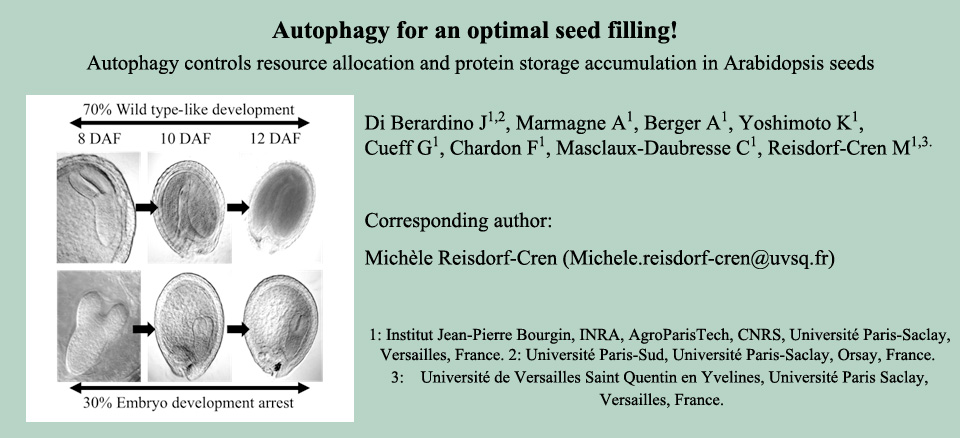Autophagy controls resource allocation and protein storage accumulation in Arabidopsis seed
Authors
Julien Di Berardino, Anne Marmagne, Adeline Berger, Kohki Yoshimoto, Gwendal Cueff, Fabien Chardon, Céline Masclaux-Daubresse, Michèle Reisdorf-Cren
Link to the original articleYear of publication
2018
Journal
Autophagy
Abstract
In plant, autophagy is essential for nutrient recycling and plays a fundamental role in nitrogen remobilization from senescing leaves to seeds. During seed maturation, storage proteins (12S globulins and 2S albumins) accumulates in specific vacuoles (PSV for Protein Storage Vacuole) and will represent a nitrogen source for the plantlet during germination. In this study, we show that autophagy controls resource allocations from fruit to seed, embryo development and protein storage accumulation in Arabidopsis. It is the first study showing autophagosomes in Arabidopsis embryo. Seeds of atg5 mutant exhibit a high abortion rate (Figure 1), probably due to a nutriment defect, an accelerated browning of the tegument and an early and differential accumulation of high weight proteins (> 37 kDa) compared to wild type seeds. In addition, storage protein content (12S and 2S) was 63% reduced in atg5 seeds, in comparison to wild type. These results indicate that autophagy would not simply be a degradation process but would play un role in precursor maturation of the storage proteins, either directly via the transport in autophagosome of specific proteases (VPE for Vacuolar Processing Enzymes) responsible for precursor maturation, either indirectly by controlling the rate of oxidized protein that could affect the maturation or the transport of these precursors in the protein storage vacuole (PSV).
Graphical abstract
